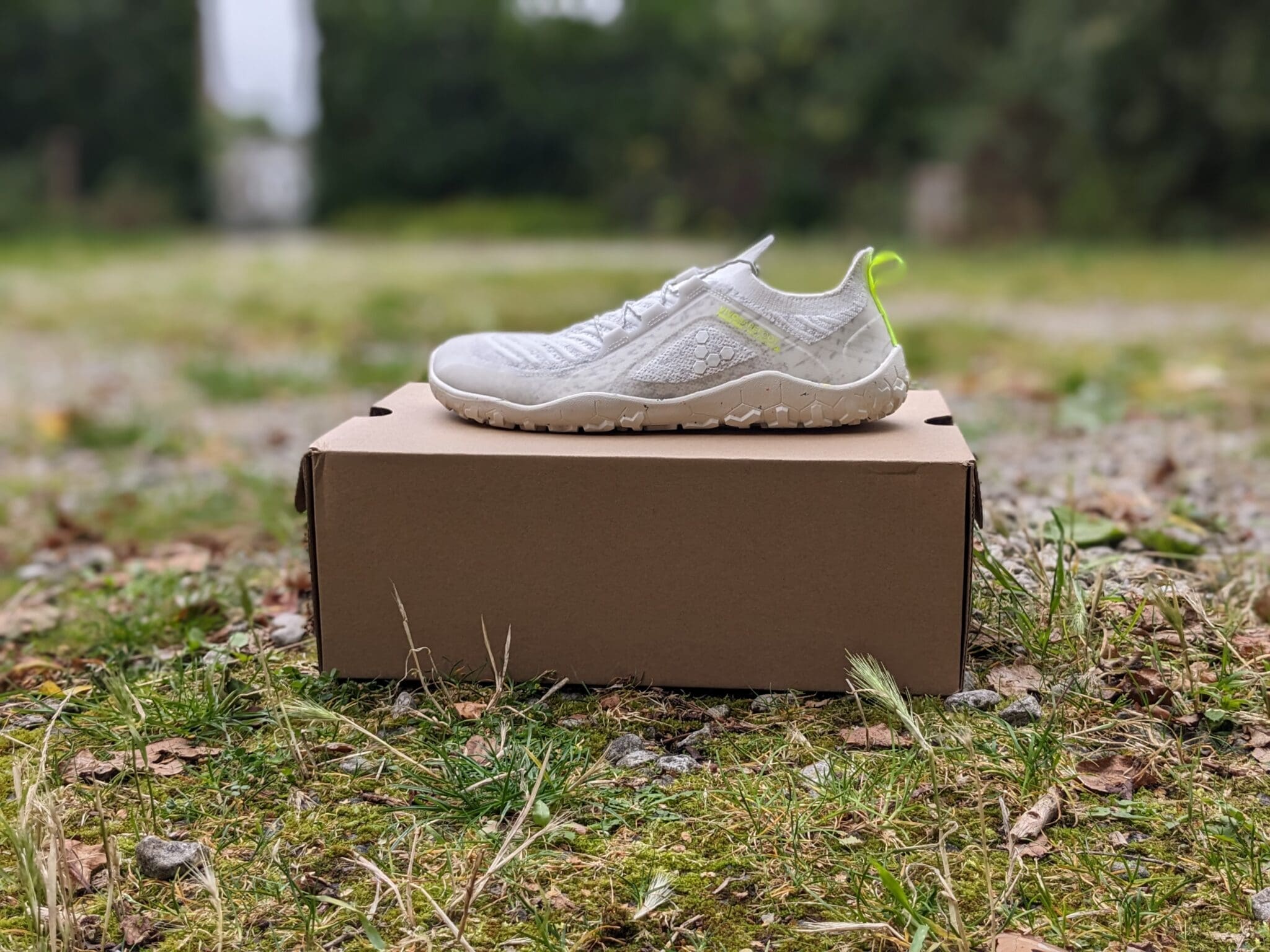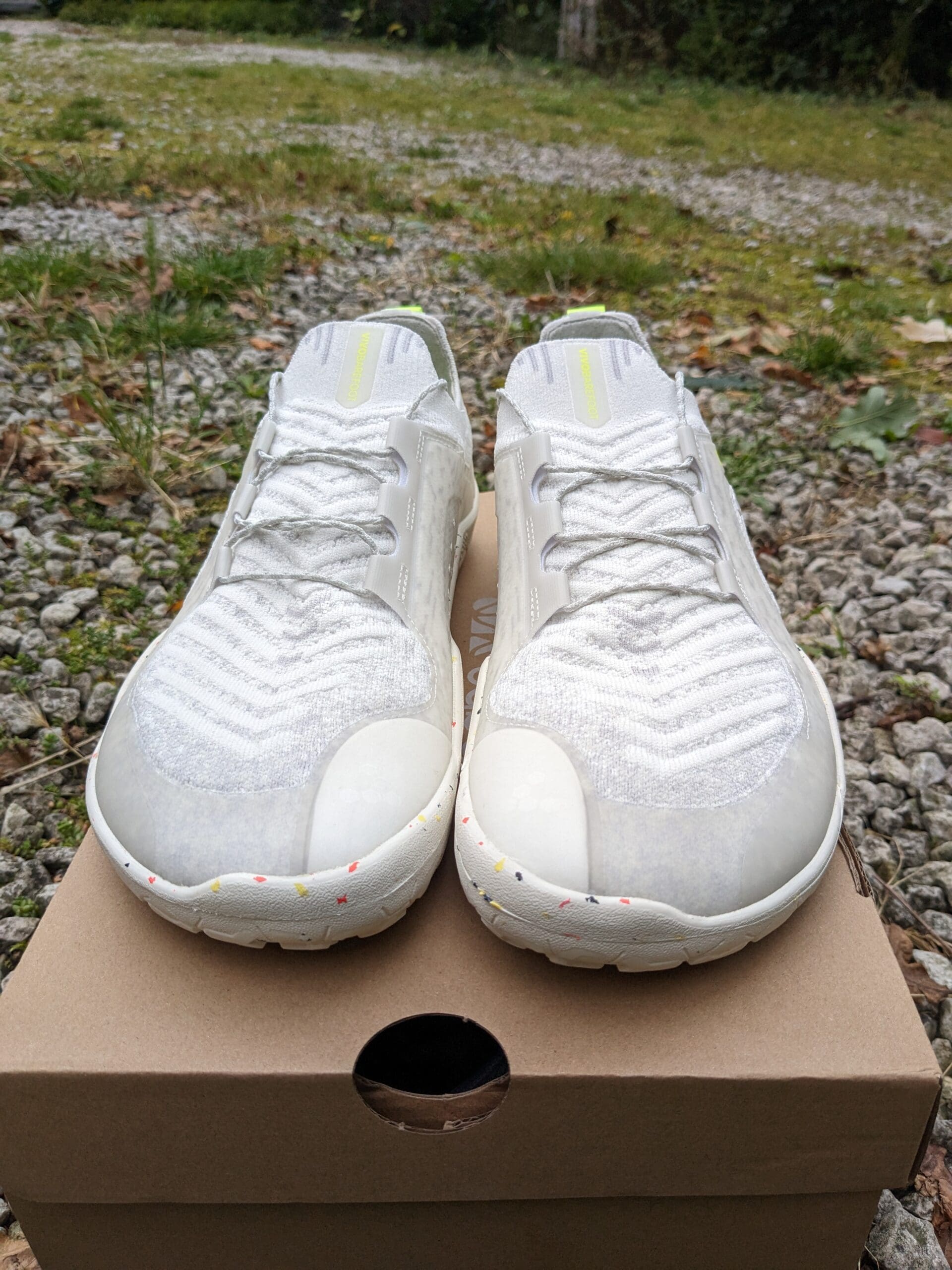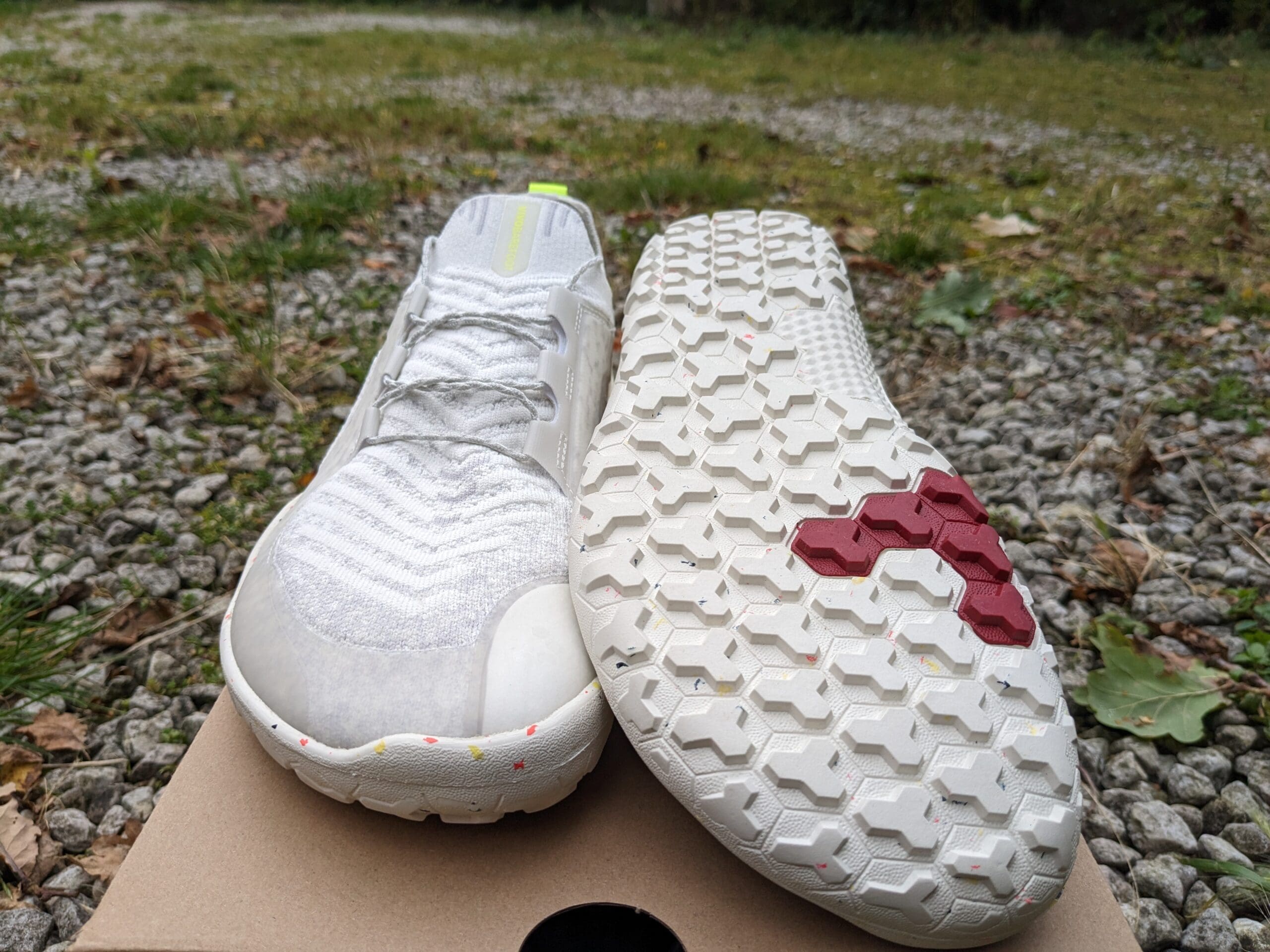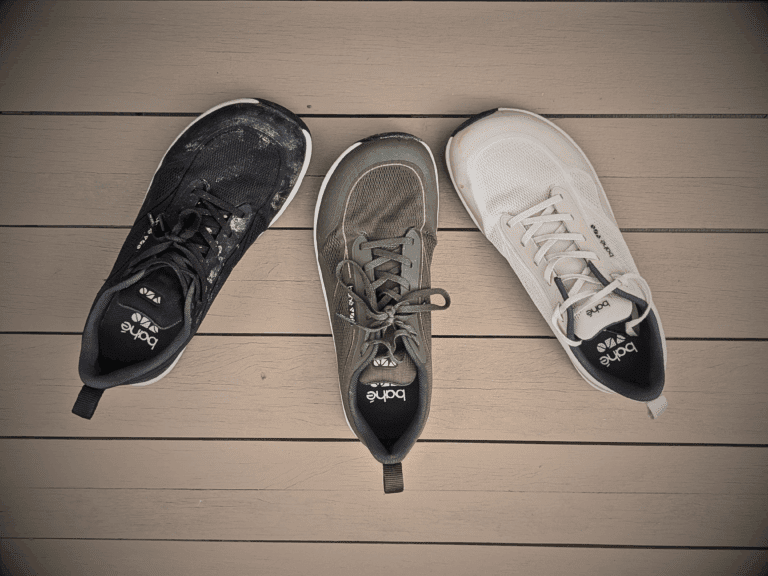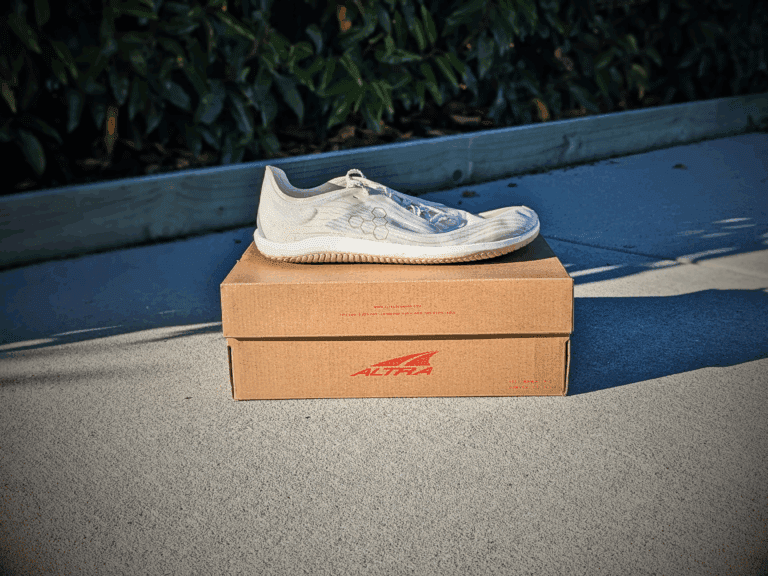Is it really a good idea to have a trail shoe with a knit upper? Vivobarefoot thinks so. I decided to put this Frankenstein idea to the test with the Vivobarefoot Primus Trail Knit FG. But should you do the same?
With a semi-aggressive lug pattern, an uber-comfortable upper, and a forgiving toe box, it sounds like a dream on paper.
Affiliate Disclosure: By clicking through the links on this page and purchasing the products, you’ll be helping me out. This is done because I receive a kickback from the sellers at no extra cost to you! Thank you so much for supporting us!
Amazon.com
Primus Trail Knit FG
(free returns)
But will the flexible upper result in a sloppy fit? Or will we see an early end to the life of the Primus Trail Knit FG?
We’ll find out as I dig into the Fit, Feel, and Durability of the Vivobarefoot Primus Trail Knit FG and outline why this shoe could be for you. And if not, advise where to look next for your perfect trail shoe.
Which minimal running shoe is for you?
Take a quick 5-question quiz to identify the perfect minimal running shoe for your feet! You'll get both road and trail options based on your answers!
Multiple factors come into play when you’re looking at a shoes fit. And most of those factors are dictated by the size and shape of your foot.
Does it fit true to size?
I’d say the Primus Knit Trail fits ½ a size too long. ½ a size isn’t huge; it amounts to around 3.5mm, but when you consider that the shoe only comes in full sizes, it becomes an issue.
I would love a US8.5, but they don’t make ½ sizes. That means if your standard size is a ½ size, round down to the nearest whole size, and I think it’ll be perfect. Whereas if you usually wear a round number like me (US9), you’ll suffer with the shoes being too long.
Just remember you still need room at the end of the toe box. On a very steep descent, you will slip forward in these shoes (more on that later), so make sure you have a little room at the end of your shoe so you don’t bruise your toes.

Is the toe box wide?
Vivobarefoot shoes taper aggressively on the little toe. This is where your foot shape comes into it. If you don’t have a large toe splay on the little toe, or it’s turned in like me, the toe box will work fine. But if you have a wide fan-like shape to your toes, you may want to look to another brand like Lems or Softstars.
Only downsize if your little toe turns inward. For the same reasons above, downsizing might only work for some. But if your toe turns in slightly, you’ll likely be fine.
There’s plenty of room for the big toe to spread. On the flip side, the big toe has plenty of space, which is excellent as it allows for perfect big toe stabilization and optimal propulsion.
There’s no tongue on the shoe; does that affect the fit?
If you have a shallow foot, you may see bunching over the top of your foot. Tongues on a shoe are a genius shoe design. It avoids material bunching, which can cause hot spots and discomfort. Because we’re looking at a design with a stretchy upper, Vivobarefoot decided to go tongueless! If your foot fills out the shoe, you’re fine, but those with shallow feet may want to look at the standard Prmius Trail FG because it fits much more snugly over the top of the foot.
The material around the cuff is more stretchy than your socks. I say that because I’m sure you have socks that bunch, which are likely 100% cotton socks. But I’m sure you also have socks that don’t bunch, because they’re partially made with a material like elastane to achieve some stretch. And that’s what this shoe liner has. So, Vivo has done its best to avoid any bunching that can cause discomfort.
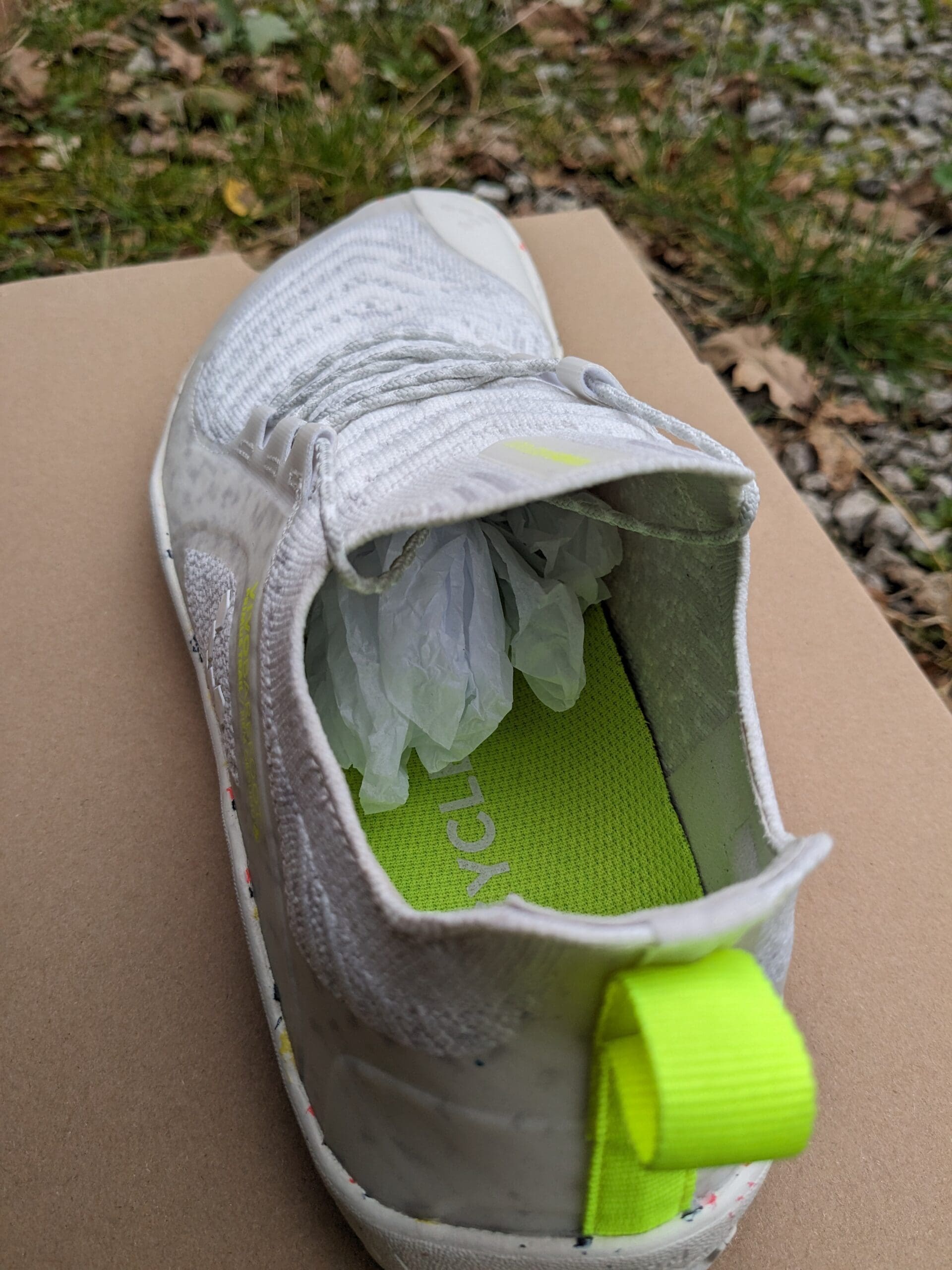
What is the heel lock like?
It’s awesome. Probably my favorite part of the shoe! So why does it work so well?
The dish of the heel sits far back and has an aggressive angle up towards the achilles. Basically, your heel has a large cup to sit in. Higher in the shoe around the achilles, there’s a soft cushioned bump to lock the heel in place further.
Such a deep dish could be an issue for those with sensitive achilles. I’ve never had any problems, but I can imagine you’re sensitive around the ankle; this aggressive heel cup could press up against the back of your ankle and cause discomfort. I’d guess that’s only 2-3% of you out there, but it’s worth noting.
Does the shoe suffer from a laceless design?
The knit is one situation where the drawstring lacing system can work. Usually, I’d love companies to stick with traditional lacing. It allows for different lacing techniques and pinpoint tightening. But in this case, with a knit design, it’s unlikely that you’ll have pressure points, which means you won’t need that pinpoint tightening accuracy. In this case, the drawstring just ensures your foot doesn’t slip forward in the shoe, and that is all.
Does the knit offer a more comfortable fit than the standard Primus Trail?
The Knit may be the solution if Vivos haven’t fit in the past because they’re too tight. I found the Trail Knit to be much more forgiving around the midfoot and heel. That’s important for those who have found the standard Primus line to have pressure points due to the narrower base.
There’s more depth in the Primus Trail Knit compared to the standard Primus Trail. I’d mostly attribute this to the forgiving knit material, but I also want to say the toe box and the forefoot feel more roomy. That could be because it’s a 2023 model, and the design has changed slightly. But if you’ve had issues with depth in Vivo shoes, I can confirm that the Knit models are much more accommodating.
Amazon.com
Primus Trail Knit FG
(free re)
I like the feel of the relaxed upper and flexible outsole, but a trail shoe should generally have more structure.
I would throw these shoes on for an easy run in the park or a casual hike, but I wouldn’t race a technical course in the Primus Trail Knit.
Are the shoes flexible?
If you’re looking for a ground feel with some protection, the Primus Trail does the job. The FG is an acronym for Firm Ground, which indicates the sole on the shoe. It’s the same as the standard Primus Trail FG and is super flexible in every direction. They’re not entirely on the level of the Xero Shoes Mesa Trail in terms of flexibility but have balanced good protection with a ground feel.
The partial knit upper allows the shoe to flex more than the standard Primus Trail. One thing I noted in the standard Primus Trail review is the crease point that forms at the forefoot. This is due to the stiffer materials of the upper. The Knit material for this version allows greater flexibility across the whole shoe.
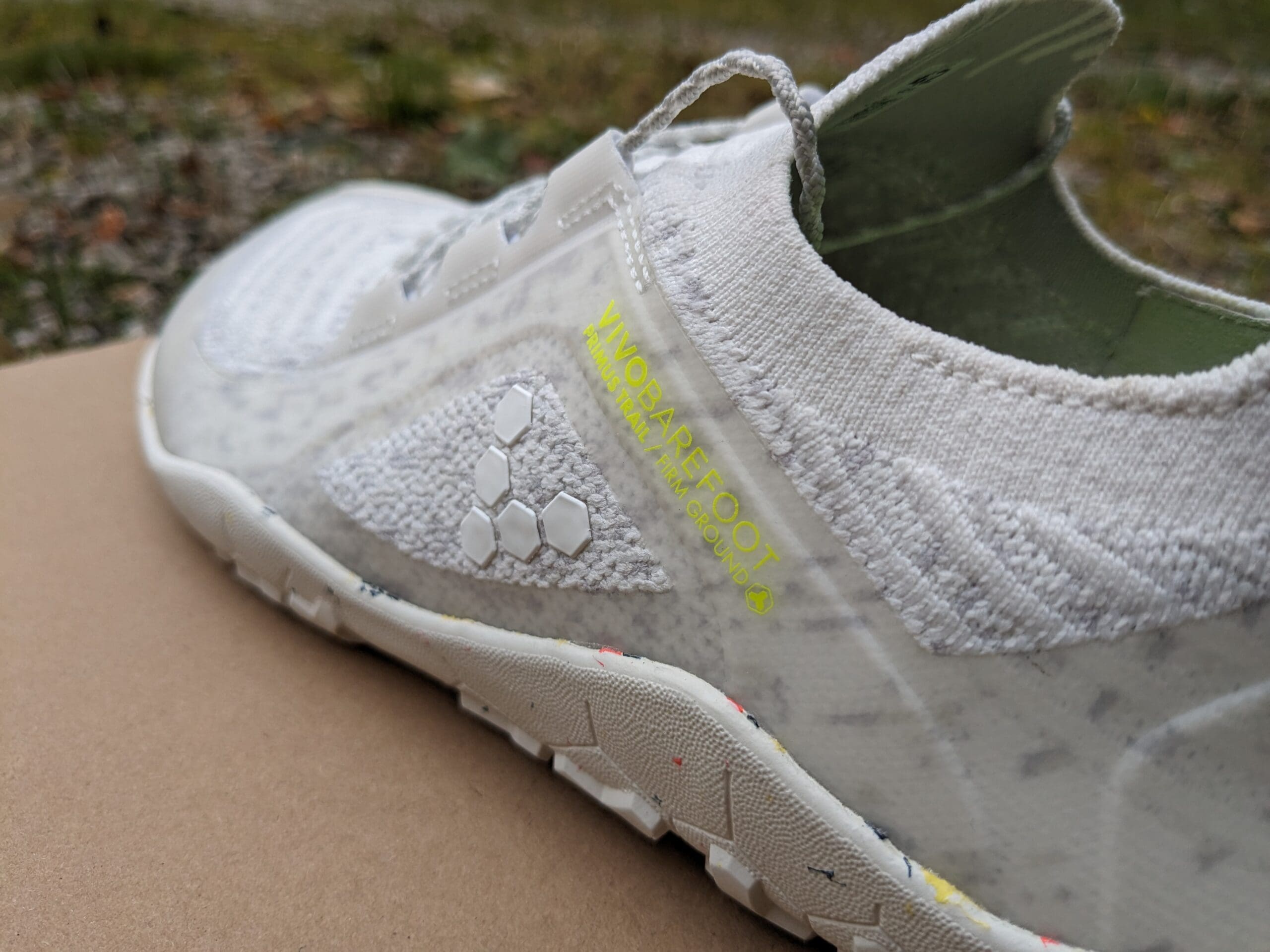
Does the lockdown provide security?
I mentioned the lacing in the fit section, and I was surprised at how well it worked. But… that didn’t ring true for all terrain. When tackling a steep descent, I found my foot slipping forward more than I would have liked. Better lacing could have solved this problem.
The knit upper means this shoe isn’t meant for the high alpine. It’s best suited for smooth, rolling trails without much technical terrain. Once you start adding lateral motion into the mix, you’ll find your foot rolling inside the shoe. This will depend on how “fitted” the shoe is and how deep your foot is, but the knit is the main contributing factor here.
Is there too much ground feel on rough terrain?
The FG outsole is just enough to protect you from sharp objects. I think Vivobarefoot has found near perfection with its outsole. Not too much, but just enough to protect you. That means you can step on a relatively sharp rock and only get a gentle reminder to place your foot better next time!
The 6.5mm outsole consists of a 3mm rubber base, 2.5mm lugs, and a 1mm puncture-resistant layer. The 1mm layer adds a little peace of mind if you step on a nail or a thorn (which I have done in other shoes… it went straight through).
Does the FG tread provide enough grip?
The FG is more than enough for dry, sandy conditions or light mud. For thick mud and boggy conditions, as you get in the UK, I’d love to see the Trail Knit in an SG (soft ground version) with 4mm lugs. But I’d likely choose the standard Primus Trail at that point.
I tried these shoes on very wet, grassy moorland, and it was ok, but as soon as I encountered muddy sections, I was all over, which is valid for most shoes. The shoes were more than perfect for gravel sections, but for wet rocks, the rubber compound only did an ok job of providing purchase.

Can I run without the insole?
The insole is fully removable and drops you an extra 2-3mm closer to the ground. I would love this, but it’s only an option for those with deep feet that fill out the shoe. Rather than being a decision about feel, having the insole in or out is more a decision of fit.
Let’s talk about the weight
Each shoe weighs in at 400g (14oz) for a men’s US9. You read that right! 400g! Even for a trail shoe that’s heavy, and when it comes to barefoot shoes, that’s a beast. I can only assume the knit material adds a ton of weight. Take these shoes through the water, and you’ll feel like you’re running in bricks.
Heavier shoes lead to more energy expenditure. It’s not just about the feeling, either. Having heavier shoes leads to more energy usage, too. That’s why you see these new Nike marathon shoes weighing the same as traditional barefoot shoes with twice the amount of material. So, having the heavy Primus Trail Knit on your feet will undoubtedly affect your PR attempts. But you have to ask yourself what you’re running for in the first place.
Amazon.com
Primus Trail Knit FG
(free returns)
How long will the outsole last?
If you keep the shoe on the trails, the outsole will likely last up to 1000km. I have this confidence because of my experience with the Primus Trail and the feel of the rubber compound used on the outsole. It’s a reasonably hard rubber, which is good for durability but not for grip. It’s all just a trade-off.
Considering Vivobarefoot is pushing for a green future, I’d trust they’re using materials that will last. This feeling is more a matter of trust. Trust that the environmental message they’re pushing is true, and they do care about the footprint they leave (nice pun, eh!).
Can I repair the shoe?
Sadly, Vivobarefoot does not offer repairs on the Primus line. But many of their other casual models can be returned for repairs and sprucing up. However, they do have a recycling program once you’ve finished with the shoes.
Once you can’t repair or don’t need them anymore, send us your old Vivos and we’ll make they sure they’re given a second life, or if they’re really well-loved, we’ll store them until we launch our recycling solution.
If a lace snaps or you want replacement insoles, contact Vivobarefoot directly; they’ll sort you out. Vivo mention that “Laces and insoles can be replaced.” So, if you’re unfortunate enough to need replacements, at least you know there are options.
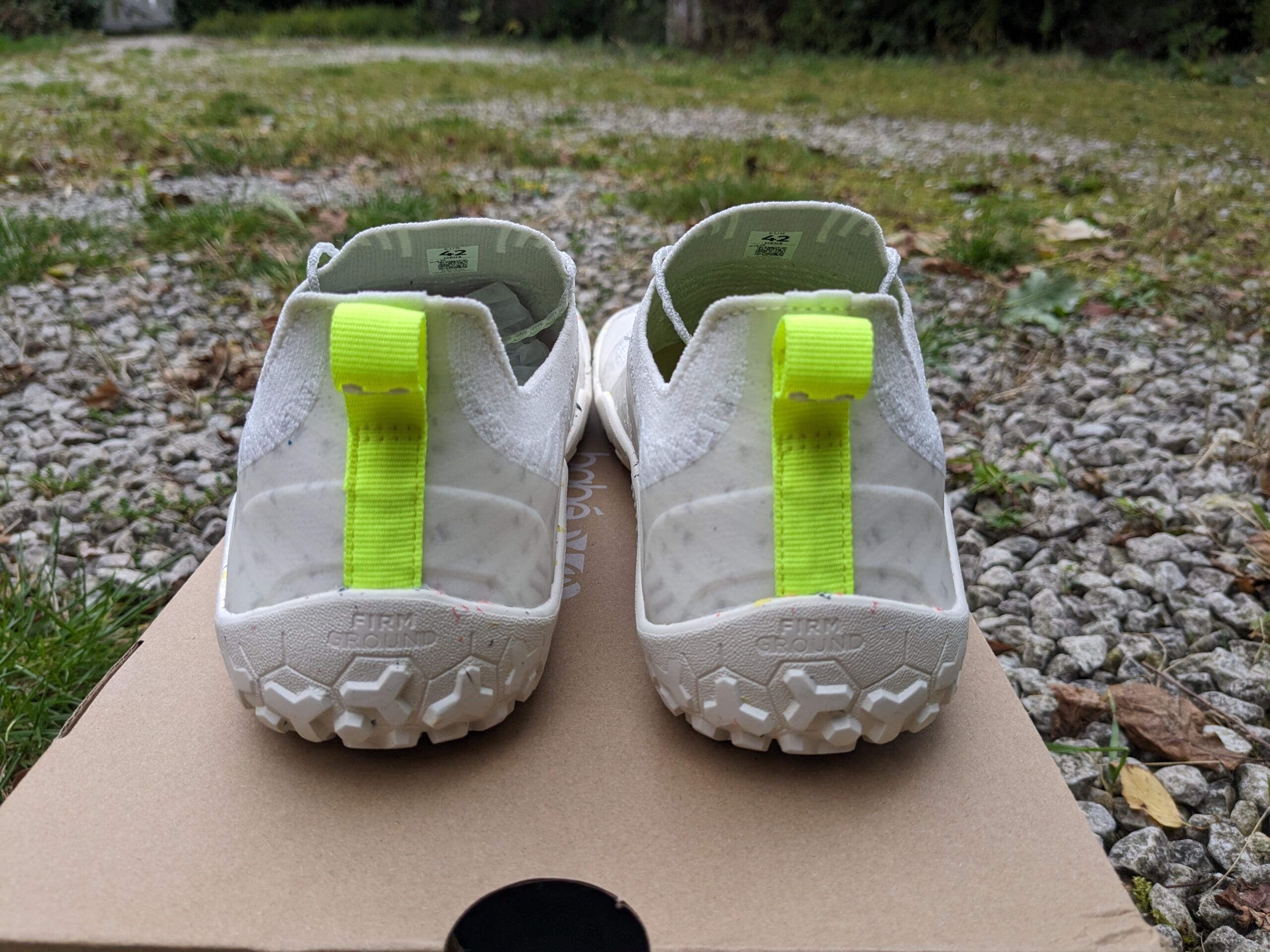
Will the knit upper rip?
Most of the vulnerable sections of the knit are protected. A plastic overlay runs all the way around the toe and back through the midfoot into the heel. These are all the sections that you’re likely to scuff. And if you do. The rocks will bounce straight off!
The material may pull if you’re unlucky enough to catch the knit on a branch. But it doesn’t seem like it’ll cause a rip right through. The knit is woven tightly with multiple layers, so any pull will look funky, but it won’t affect the shoe’s performance.
Glue problems with the outsole connection
In the past, I’ve seen the outsole become unstuck, particularly around the forefoot bend. Because the materials in the knit are much more flexible, less pressure will go through this area, meaning it’s less likely to come unstuck.
As with any manufacturing issue, contact Vivobarefoot directly. I say this because 1) you may find they can help you, and 2) they need the feedback! When enough people start giving this feedback, they’ll change the design and avoid the problems in the future!
Amazon.com
Primus Trail Knit FG
(free returns)
I have mixed feelings about the Vivobarefoot Primus Trail Knit FG.
I love the feel. And I know I’d love the fit if it were a ½ size smaller.
But I want to see more stability, and I don’t want a shoe this heavy.
So, who is the Primus Trail Knit for?
Those who have had fit issues in the Primus lineup in the past and need a little more give in the upper.
Those who want a stylish trail shoe that’s comfortable for hiking, too.
Those who run the occasional cross-country park run but are not looking to set a PB.
Who should avoid the Primus Trail Knit?
Those who want the maximum barefoot feel in a lightweight package
Those who want a precision fit with good lateral stability.
Those that want a little extra cushion underfoot to protect further from rocks and roots.
- Try the Altra Superior 6 or Lone Peak 7.
Amazon.com
Primus Trail Knit FG
(free returns)
